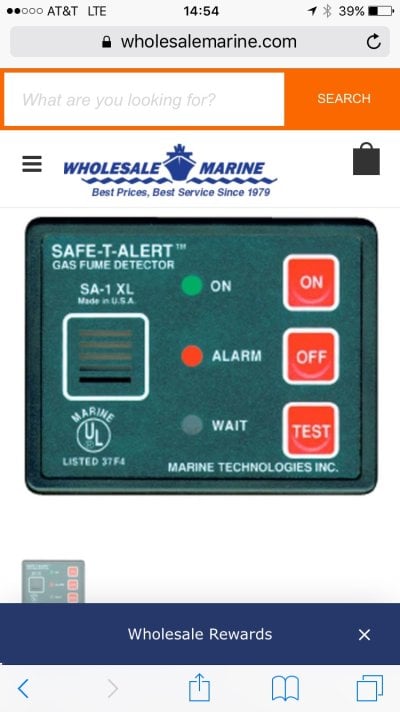Old Crow
Searching....
A recent thread on LP gas and CO detectors led to my calling two manufacturers to see what they have to say about testing the CO side. I called MTI Industries (maker of my Safe-T-Alert model) and Atwood (maker of a combo LP/CO unit I've seen in photos posted in the Four Wheel Campers sub-forum).
Before calling, I had done a few web searches and was aware of YouTube videos on the subject, one showing the alarm in a plastic bag with burning incense to generate the CO (this one) and another showing the tester using a can of CO gas (this one). I was curious what the manufacturers would have to say about those test methods.
Both of course told me the first thing to do is push the test button on the unit. And both confirmed that this test checks for power and function of the circuit boards but does not test the sensor.
The Atwood rep said she's not aware of any other test that could be conducted by an owner. She checked with a senior rep and they checked their manuals to be sure. They said they had not heard of testing with either incense or canned CO.
The Safe-T-Alert rep kicked my question up to an engineering-support guy. He first noted that the sensor manufacturer says the sensor has a 5-year life so that's what they use in their product literature. For testing, they use a can of 'test gas' which contains nitrogen and CO, with a CO level of 400 ppm. And that canned CO is for sale on their web site. I had missed that entirely and thought I was pretty familiar with their web site. It turns out the canned CO is only shown under the Carbon Monoxide Alarms selection and does not appear in the Dual Alarms selection.
I asked about using incense. He has no experience with it but said he'd probably avoid it as you're not sure what the burning incense stick is putting off. It may be putting off particles that would not be good for the sensor or its filter.
The gas they sell on their web site is a Detectagas product. That led me to an interesting video by Detectagas where the rep shows a dis-assembled CO detector and explains how it works...
...and how to conduct the test....
The problem, though, is a can of Detectagas costs $35 (from MTI Industries).
An alternative may be COCheck. This web site describes it.
I also noticed it came up under Grainger so I called them to see if I could pick it up locally. They could have it for me tomorrow and cost would be $13.80-something a can.
Before calling, I had done a few web searches and was aware of YouTube videos on the subject, one showing the alarm in a plastic bag with burning incense to generate the CO (this one) and another showing the tester using a can of CO gas (this one). I was curious what the manufacturers would have to say about those test methods.
Both of course told me the first thing to do is push the test button on the unit. And both confirmed that this test checks for power and function of the circuit boards but does not test the sensor.
The Atwood rep said she's not aware of any other test that could be conducted by an owner. She checked with a senior rep and they checked their manuals to be sure. They said they had not heard of testing with either incense or canned CO.
The Safe-T-Alert rep kicked my question up to an engineering-support guy. He first noted that the sensor manufacturer says the sensor has a 5-year life so that's what they use in their product literature. For testing, they use a can of 'test gas' which contains nitrogen and CO, with a CO level of 400 ppm. And that canned CO is for sale on their web site. I had missed that entirely and thought I was pretty familiar with their web site. It turns out the canned CO is only shown under the Carbon Monoxide Alarms selection and does not appear in the Dual Alarms selection.
I asked about using incense. He has no experience with it but said he'd probably avoid it as you're not sure what the burning incense stick is putting off. It may be putting off particles that would not be good for the sensor or its filter.
The gas they sell on their web site is a Detectagas product. That led me to an interesting video by Detectagas where the rep shows a dis-assembled CO detector and explains how it works...
...and how to conduct the test....
The problem, though, is a can of Detectagas costs $35 (from MTI Industries).
An alternative may be COCheck. This web site describes it.
I also noticed it came up under Grainger so I called them to see if I could pick it up locally. They could have it for me tomorrow and cost would be $13.80-something a can.


